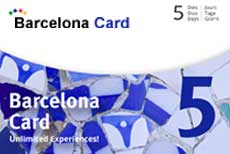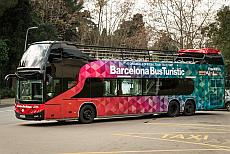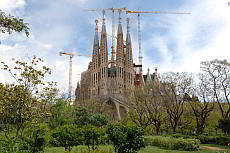Casa Calvet
Antoni Gaudí's most conservative building
Casa Calvet stands out among Antoni Gaudí's buildings for one thing: it is absolutely unspectacular.
The Casa Calvet project almost failed to go as Gaudí had planned. The building authority refused the building permit because the house would be too high and tower over the other buildings. Gaudí changed the plans and dispensed with the two round gables. Nevertheless, the construction was approved and built with the original plan. Since the Casa Calvet towers over the other buildings, it can be assumed that the approval came about under pressure from its builder, Pere Màrtin Calvet.
The industrialist Calvet was mainly active in the textile industry. The house was to be a place to live and work. His fabric shop was built on the ground floor, and the employees' workrooms were in the basement. The upper floors were the private and work rooms of the master of the house.
The Casa Calvet building
Construction began in 1898, and the Modernisme house opened in 1900. The house blends in harmoniously, one could almost say "unobtrusively" with its surroundings. If you don't know that there is a Gaudí house here, you could easily miss it. The façade looks elegant and quite untypical for Gaudí, the symmetry and straight lines of the façade are striking.
The architect Antoni Gaudi
Barcelona's most famous modernist architect, Antoni Gaudí.

The house was built of stone that had been quarried on Montjuïc. But something typically Gaudí can still be found on the facade: the round balconies, on which railings made of wrought iron steel are attached.
At the foot of the pediment are three busts: the first is dedicated to Saint Peter the Martyr. In Catalan Sant Pere Màrtir, the client's namesake. The other two to Saint Genesius of Arles and Saint Genesius of Rome, the two patron saints of Calvet's hometown.
Gaudí knew how to fill the buildings with details that relate to the life and work of his clients. Two columns in the form of cotton bobbins flank the entrance, and an initial "C" enthrones above the front door.
One of Calvet's passions - mushroom picking - served Gaudí as an inspiration for other design elements, inside and out: the two round roof gables and the round balconies are supposed to be reminiscent of mushrooms.
Antoni Gaudí was not only a brilliant architect, but also a brilliant designer. As with most of his works, Gaudí also designed the interior of the house. For example chairs, the desk, the sofa and much more. Today you can visit them in the museum of Casa Batlló.
A little anecdote: a total of seven (!) Gaudí houses are on the UNESCO World Heritage List. But Casa Calvet was the only house for which Gaudí received an award during his lifetime: in 1900 the Barcelona City Council awarded Gaudí the prize for the most beautiful building completed that year.
Casa Calvet today, is it possible to visit?
Unfortunately no, Casa Calvet is privately owned. Except for the chocolate shop of Chocolates Brescó and the restaurant, the house is not open to the public. If you are interested in the works of Gaudí, it is worth reserving a table at the China Crown. It offers very good Asian-International cuisine and you can get a little sense of how Gaudí envisioned the house.
Useful about Casa Calvet
(Click on the product images to view prices and availability)
Important information
Surroundings
Find Hotels nearby
Address
Carrer de Casp, 48
Phone: +34 933 158 095 (China Crown)
Arrival
Metro: Urquinaona (L1, L4)
Bus Turístic: Casa Batlló - Fundació Antoni Tàpies
Parking nearby
Tips for Casa Calvet
The Casa Calvet cannot be visited. But if you like chocolate, you should definitely go to Chocolates Brescó chocolate shop. There is an Asian restaurant on the ground floor: the China Crown gives a small impression of why Gaudí's houses are a must-see. We recommend reserving in advance.
Book your accommodation in Barcelona here! All categories.
1-5*-hotel rooms, apartments, hostels.




